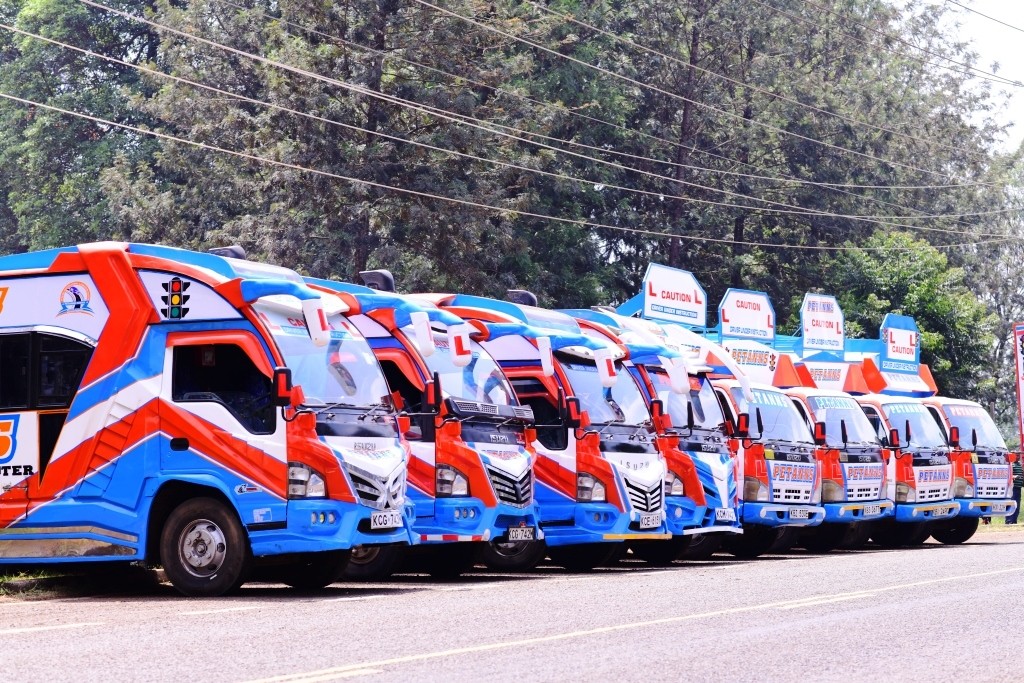In Kenya, the demand for quality driving schools has surged as road safety awareness and the need for skilled drivers grow. With the National Transport and Safety Authority (NTSA) overseeing the licensing and regulation of driving schools, registering a new driving school is a structured yet achievable process. Whether you’re an entrepreneur looking to tap into this thriving sector or a professional aiming to contribute to safer roads, understanding how to register a driving school on the NTSA portal is crucial. This comprehensive guide walks you through the requirements, application process, costs, timelines, and expert tips to successfully establish a driving school in Kenya in 2025.
Why Start a Driving School in Kenya?
The Kenyan transport sector is evolving rapidly, with over 1.4 million registered vehicles and a growing need for qualified drivers, according to NTSA data. Driving schools play a pivotal role in equipping learners with the skills to navigate Kenya’s roads safely. Starting a driving school is not only a profitable venture but also a chance to contribute to reducing road accidents, which claim thousands of lives annually in Kenya. However, the process of registering a driving school requires compliance with NTSA regulations and a seamless application via the NTSA portal or E-Citizen platform.
This article provides a step-by-step guide to registering a new driving school, covering requirements, the application process, verification, costs, and timelines. By following these steps, you can ensure your driving school meets NTSA standards and thrives in Kenya’s competitive market.
Requirements for Registering a New Driving School in Kenya
Before diving into the application process, you must gather all necessary documents and meet NTSA’s eligibility criteria. These requirements ensure that your driving school operates legally and upholds the standards set by the authority. Below is a detailed list of what you’ll need:
- KRA PIN of the Driving School: The driving school must have a valid Kenya Revenue Authority (KRA) PIN, registered under the business entity (e.g., a limited company or partnership). This PIN is essential for tax compliance and NTSA verification.
- Certificate of Registration or Gazette Notice: You must provide proof of business registration with the Business Registration Service (BRS). This could be a Certificate of Incorporation for a company or a Gazette Notice for other business types, confirming the legal existence of your driving school.
- KRA PINs of the Directors: All directors of the driving school must submit their individual KRA PINs. This ensures transparency and accountability in the business’s operations.
- Mobile Phone Number: The application requires a mobile number not linked to any active Transport Integrated Management System (TIMS) account. This number will be used for communication and notifications during the registration process.
- ID Numbers of Directors/CEO: National ID numbers of the directors or the CEO must be provided for identity verification and to ensure compliance with NTSA regulations.
- Physical and Operational Requirements: Beyond documentation, NTSA mandates that driving schools have a physical office, qualified instructors, and appropriate training vehicles. These will be verified during the physical inspection stage.
Additional Considerations for Compliance
- Ensure the driving school’s name is unique and not already registered with NTSA or BRS.
- Verify that all directors have no unresolved legal or tax issues that could delay approval.
- Prepare for NTSA’s physical inspection by setting up a professional office space and ensuring vehicles meet training standards (e.g., dual-control vehicles for manual transmission training).
By preparing these documents in advance, you can streamline the application process and avoid delays.
Step-by-Step Guide to Registering a Driving School on the NTSA Portal
The NTSA has integrated its services with the E-Citizen platform, making the registration process for a new driving school digital and efficient. Below is a detailed breakdown of the application process, designed to help you navigate the NTSA portal with ease.
Step 1: Access the E-Citizen Platform
To begin, you’ll need an E-Citizen account, Kenya’s centralized digital platform for government services. Follow these steps:
- Visit the E-Citizen website (www.ecitizen.go.ke) and log in with your credentials. If you don’t have an account, create one by providing your ID number, email, and phone number.
- Once logged in, navigate to the “NTSA Services” section or the newly introduced National Integrated Safety Agency (NISA) service portal.
Step 2: Select the Driving School Registration Service
- On the NTSA or NISA portal, locate the option for “Driving School Registration” or “New Driving School Application.”
- Select “Apply for a New Driving School Licence” to start the process.
Step 3: Fill Out the Application Form
- Complete the online application form with accurate details about your driving school, including:
- Business name and registration details.
- KRA PIN of the driving school and directors.
- Contact information (mobile number and email).
- ID numbers of directors or the CEO.
- Upload colored scans of required documents, such as the Certificate of Registration, KRA PINs, and ID copies. Ensure all uploads are clear and legible to avoid rejection.
Step 4: Submit the Application and Await Approval
- Review your application for accuracy before submitting it.
- After submission, you’ll receive a confirmation via email or SMS, along with a reference number to track your application status.
- NTSA will process your application within 10 working days, provided all documents are in order.
Step 5: Verification and Physical Inspection
- Once your application is reviewed, NTSA will schedule a physical inspection of your driving school’s premises and training vehicles.
- During the inspection, NTSA officials will verify:
- The existence of a physical office with proper signage and facilities.
- The availability of qualified instructors with valid NTSA instructor licenses.
- The condition of training vehicles, which must meet NTSA standards (e.g., fitted with dual controls for safety).
- Ensure your premises are ready for inspection by maintaining a professional setup and addressing any potential compliance issues.
Step 6: Make Payments
- Upon passing the verification and inspection, you’ll receive an SMS notification with payment instructions.
- Payments are made through the E-Citizen platform using mobile money (e.g., M-Pesa) or bank cards.
- The exact charges vary based on NTSA’s fee structure, which may include:
- Application fee.
- Licensing fee for the driving school.
- Inspection fee (if applicable).
- As of 2025, NTSA does not publicly list specific fees on its website, so check the portal or contact NTSA directly for the latest fee schedule.
Step 7: Print and Display the Licence
- After payment, NTSA will issue a digital driving school license, accessible via the E-Citizen or NISA portal.
- Download and print the license, then display it prominently at your driving school’s office as required by NTSA regulations.
Charges for Registering a Driving School
The cost of registering a driving school in Kenya varies depending on several factors, including application fees, inspection charges, and licensing fees. While exact figures may change, you can expect the following:
- Application Fee: A non-refundable fee for processing the application, typically paid via E-Citizen.
- Inspection Fee: Charged to cover the cost of NTSA’s physical inspection of your premises and vehicles.
- Licensing Fee: A one-time or annual fee for issuing the driving school license.
To get precise costs, log in to the E-Citizen portal or contact NTSA’s customer service. Budgeting for these fees in advance ensures a smooth registration process.
Timeline for Registration
The NTSA aims to process driving school registration applications within 10 working days, provided all requirements are met and no issues arise during verification. However, delays may occur if:
- Documents are incomplete or unclear.
- The physical inspection reveals non-compliance with NTSA standards.
- There are technical issues with the E-Citizen or NISA portal.
To avoid delays, double-check your application and ensure your premises and vehicles are inspection-ready.
Expert Tips for a Successful Driving School Registration
Starting a driving school in Kenya is a rewarding venture, but it requires careful planning and adherence to NTSA guidelines. Here are expert tips to help you succeed:
- Invest in Qualified Instructors: Hire NTSA-certified instructors with valid licenses to ensure compliance and build a reputable brand.
- Choose a Strategic Location: Select a location with high visibility and accessibility, such as near urban centers or busy roads, to attract learners.
- Maintain High Standards: Equip your driving school with modern, well-maintained vehicles and a professional office to impress NTSA inspectors and clients.
- Stay Updated on Regulations: Regularly check the NTSA website (www.ntsa.go.ke) or ntsanews.co.ke for updates on licensing requirements or policy changes.
- Leverage Technology: Use the E-Citizen and NISA portals efficiently to track your application and communicate with NTSA.
- Market Your Driving School: After registration, promote your services through social media, local advertising, and partnerships with institutions like colleges or companies.
Challenges and How to Overcome Them
While the registration process is straightforward, some challenges may arise:
- Document Rejections: If uploaded documents are unclear or incomplete, NTSA may reject your application. Solution: Use high-quality colored scans and verify all details before submission.
- Inspection Failures: Non-compliance with NTSA standards (e.g., inadequate vehicles or office space) can delay licensing. Solution: Conduct a self-audit of your premises and vehicles before the inspection.
- Technical Glitches: The E-Citizen or NISA portal may experience downtime. Solution: Apply early and monitor your application status regularly.
The Role of NTSA in Regulating Driving Schools
The NTSA plays a critical role in ensuring that driving schools in Kenya adhere to high standards of training and safety. By regulating driving schools, NTSA aims to:
- Reduce road accidents caused by poorly trained drivers.
- Ensure instructors are qualified and vehicles are safe for training.
- Promote transparency through digital platforms like E-Citizen and NISA.
Registering a new driving school in Kenya on the NTSA portal is a well-defined process that requires careful preparation and adherence to regulations. By meeting the requirements, navigating the E-Citizen or NISA portal, and preparing for NTSA’s verification and inspection, you can successfully launch a driving school that contributes to Kenya’s road safety goals. With a timeline of approximately 10 working days and a commitment to compliance, your driving school can thrive in Kenya’s growing transport sector.
Whether you’re in Nairobi, Mombasa, Kisumu, or any other part of Kenya, this guide equips you with the knowledge to register your driving school efficiently. For the latest updates on NTSA regulations or fees, visit ntsanews.co.ke or the official NTSA website. Start your journey today and drive Kenya toward a safer future!





